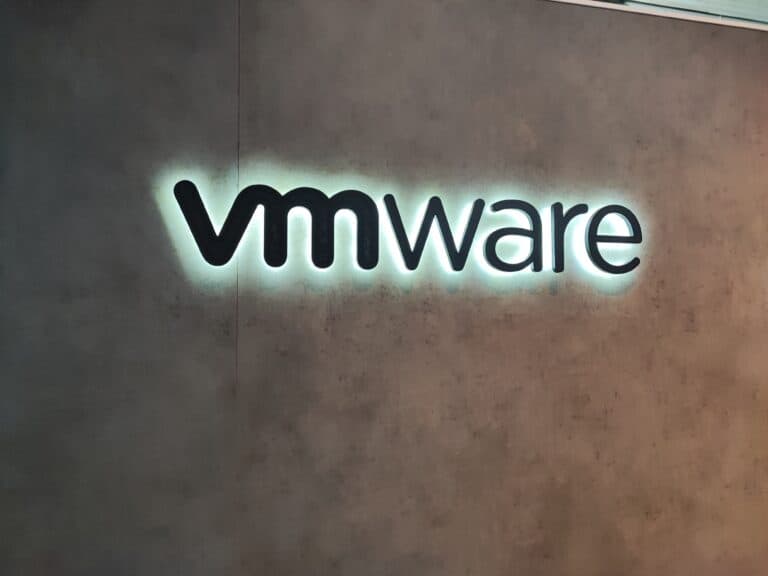Broadcom’s acquisition of VMware should worry customers, according to Nutanix’s CEO Rajiv Ramaswami. As a former top executive at both companies, he sees a pattern in Broadcom’s behaviour after it acquires another company. Thus, higher prices and less support for customers lie ahead, the Nutanix top executive said.
In his conversation with CRN, Ramaswami refers to two previous acquisitions by Broadcom: those of CA Technologies and Symantec. The strategy the company employed in those would have been based on continually incorporating and optimizing other parties. The Nutanix CEO referred to a “playbook” that Broadcom applies to its acquired parties. Specifically, it looks for mature companies with a certain “stickiness” in the market: in the case of VMware, that sticky nature is undeniable. After all, many large organizations rely on the Palo Alto-based company’s virtualization software for critical workloads. One example is the Dutch Central Bureau of Statistics, which praises VMware for its “speed, flexibility and security on one foundation.”
With VMware, Broadcom is set to execute on the same plans as before, Ramaswami believes. One is going to be a heavy focus on the 1,500 to 2,000 most important customers. In addition, “They’re going to focus on optimizing costs quite a bit.” This top tier within the customer base can be taken over by Broadcom immediately. For everyone else, there’s a choice to be made: stay with VMware despite the threat of a worse and more expensive product, move to the public cloud or “look at an alternative like Nutanix.” In doing so, Ramaswami emphasizes that Nutanix is already very experienced in facilitating a move to their platform.
What does Broadcom say?
Now, the CEO of a rival company is going to be anything but neutral. However, with both VMware and Broadcom as his former employers, Ramaswami is well positioned to speak from experience. His message to VMware customers pretty much amounts to: be brave enough to make the jump from the get go, before things get sour with VMware. Nutanix would stand to make significant inroads in markets where it’s somewhat behind VMware, such as in HCI (where VMware owns 41 percent of the market versus 25 percent for Nutanix).
It should be noted that Broadcom’s previous acquisitions were significantly smaller than VMware’s. In 2018, CA Technologies was bought for $19 billion, while Symantec’s enterprise division cost $10.7 billion. The price for VMware: $61 billion, very much a different order of magnitude. This raises the question of whether Broadcom’s previous tactics will be applicable this time. What does the company itself say about it?
First, Broadcom CEO Hock Tan promised in late August that it would immediately invest $2 billion in R&D for and deployment of VMware solutions upon closing the deal. In the future, organizations will be choosing multi-cloud en masse, he believes. Also, “You don’t have to raise prices to be innovative,” was his observation. In other words, there’s no cause for concern according to him. However, there is also ominous news to report: we reported earlier that a major round of layoffs is coming once Broadcom officially takes the reigns at VMware. It currently has about 38,000 employees, a lot more than Broadcom does (20,000). There are also concerns about a possible culture clash between the two companies, as Hock Tan hinted at putting an end to remote work. In addition, it is uncertain whether VMware’s suite of services will stay together at all, with a possible sale of its security and cloud divisions on the horizon.
Uncertainty
In short: there was already considerable uncertainty surrounding VMware, even if doubts about the deal going through in the first place have now faded. The acquisition by Broadcom finally appears to be nearing the finish line, with Oct. 30 as the final closing date.
For customers, not much will change between now and Oct. 30. Fundamental changes beyond that timeframe will also not happen overnight, so it remains to be seen if Ramaswami’s forecast comes true. Either way, it is a huge opportunity to capture market share provided VMware customers are already open to make the jump in the face of uncertainty. Nutanix’s CEO further emphasized that his company is continuing its growth irrespective of the competition. It now has 25,000 customers since the company introduced its AHV hypervisor in 2015. And, Ramaswami noted, “If you look at our installed base of customers today, about 65 percent of the workloads today are running on AHV. In 2015, guess what? All of them were running on ESX in VMware. So that’s a big change.”
Also read: Nutanix wants to be infrastructure for all workloads, including Kubernetes
